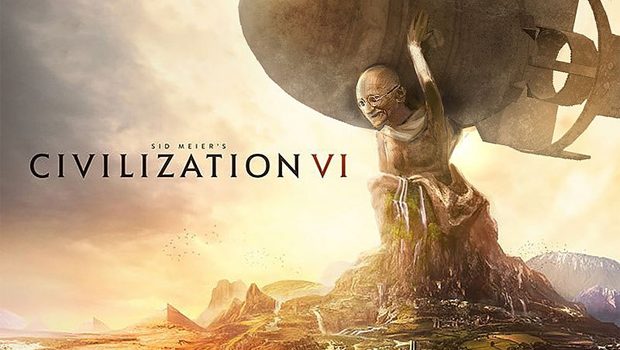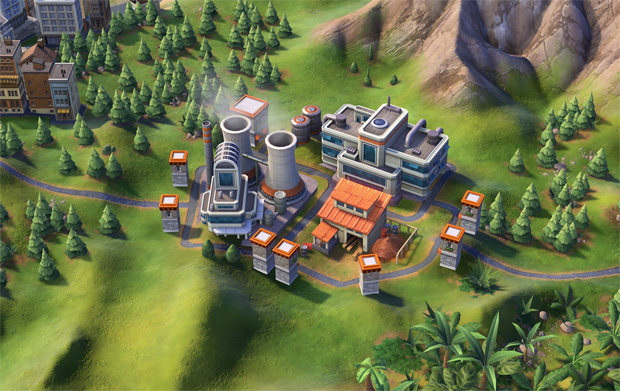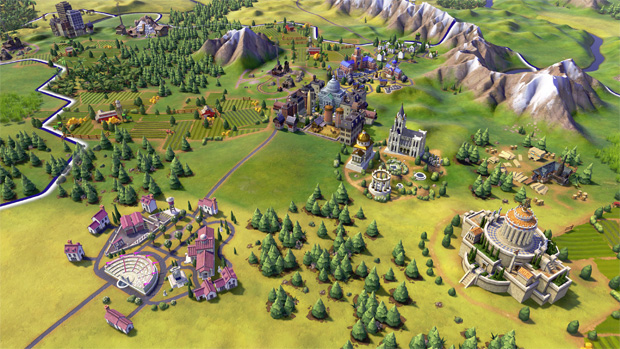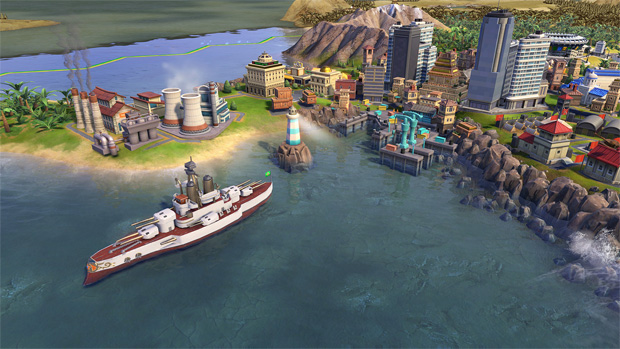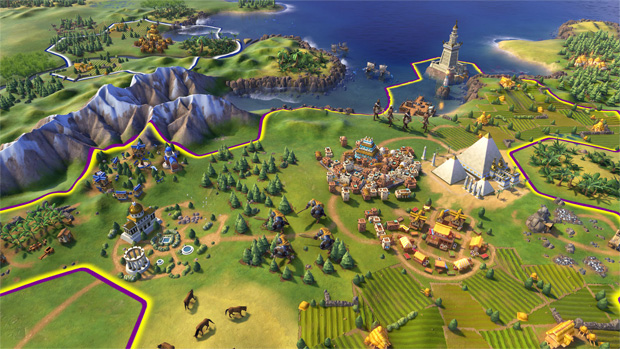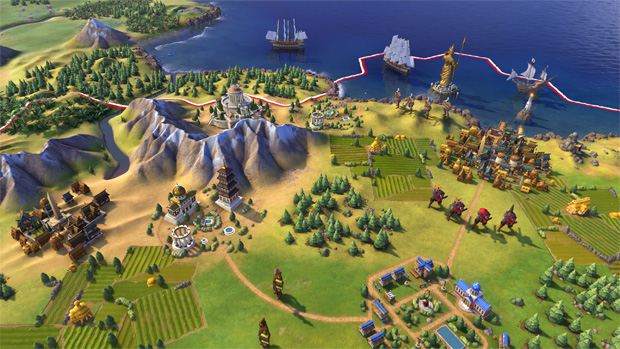Sid Meier’s Civilization 6 Review
Summary: Sid Meier’s Civilization 6 is about suffering and frustration into those wee small hours of the night!
3.5
Civilization Scrabble!
It’s been 6 years since Civilization V appeared back in 2010. It brought us prettier graphics, a cleaner interface, a hexagonal map, and generally a more simplified, streamlined way of playing Civ. A lot of the detail and educational elements of playing Civ were moved into the background or removed entirely. And while it did make the game easier for newbies, it took a few years worth of DLC to restore all the play features that still make Civilization such an involved and addictive game. Yet hopefully this time developer, Firaxis have learned their lesson, and Civ 6 is fantastic straight out of the box.
Well, let’s see, shall we?
The Civilization franchise has been around since 1991. It’s the grand-daddy of turn based strategy God games, so for those of you who’ve been living under a rock, I’ll make the explanation quick: the player takes on the role as ruler of a civilization, and attempts to build an empire in competition with other civilizations. Along with the larger tasks of exploration, warfare and diplomacy, you have to build new cities, choose improvements, advance in knowledge, and upskill your empire. Choosing from different civilizations gives you differing options and bonuses; for example, if you play the as the Romans, you’ll be better at building infrastructure, or as the British you’ll be granted a vastly more useful navy. The game begins in 4000 BC, and can last through to AD 2100 and beyond. As time advances, new technologies are developed.
At the start, players choose from advances such as pottery, the wheel, etc. and by the end, nuclear fission and spaceflight. Players can also build Wonders of the World, which are important achievements of society, science, culture and defence, ranging from the Pyramids and the Great Wall right up to the United Nations, and the Manhattan Project. Each wonder can only be built once in the world, and requires plenty of resources, but also grants special benefits. For example, The Great Wall prevents any barbarian incursions into your borders and slows enemy units by half. On top of this your civics are also slowly upgraded, taking your civilization from a base despotism to hopefully a futuristic social utopia and the envy of all your rivals.
But enough about Civ itself. Reviewing a Civ game is sort of like reviewing Scrabble. Yes, it’s a given the core idea is genius. It has been since 1991. What we really want to know is, does this edition, Civilization 6, do the franchise justice? Has it improved anything, or is it just change for change’s sake?
The first alteration is the most obvious – the graphics. And frankly it’s the most off-putting. The great leap forward of Civ 5 has now taken a step back in Civ 6. The clean, hexagonal interface has been replaced by an overly-busy, overly-colourful, and just a downright hard-to-look-at play map in Civ 6. The influence of the mobile tablet genre is obvious, and Civ now looks more like a free-to-play game app for your phone. Visually there is too much going on in every single hex of the map, and a big chunky cartoon art-style just intensifies the problem. The fog-of-war also irritates, with the play-board being re-hidden in a ye-olde-world style map on leaving an active area, rather than simple darkness. However if you can get over the graphical displeasure of Civ 6 (and after a dozen hours in I’m still struggling), there are new and interesting things to discover.
City construction and planning has changed considerably. In previous Civ, a city took up one tile, and all its improvements stacked into it. Now a city must be planned; the tiles surrounding the main need to be zoned for a plethora of different uses (e.g. industrial, mining, commercial, forestry, religious activities, monuments, etc.). The number of districts you can build depends on the population of your cities, so you have to think about which improvements are truly the most useful, and which suit your play-style the best. You may need to build one specialist science-city, or a few industrial towns, or a city of wonders:- it all adds an extra layer of complexity to the game.
Militarily, they have been a few tweaks and improvements. The most obvious being the ability to compound several units into one large army unit. It’s basically a return to the stack-of-doom without the hassle of having to move every single stacked unit individually. It helps lessen the cluttered battlefields created by Civ 5, and is at least one sign developers are happy to return to elements we loved about the older Civ editions.
Government management has been changed and refined into a system of cards. Depending on what kind of rulership you’re shooting for (theocracy, democracy, mercantile dictatorship, environmental communist, the choices are many and varied) you progress toward it by selecting cards that boost you leanings towards a particular style. For example, selecting military traditions will help guide you to more a more assertive industrial empire, and choosing art and culture is better for a religious based system. All in all, it is an improvement on Civ 5, but the steady progress of Civ 4’s political system is still missed. Civ 4 made players feel like they were truly learning how geo-politics works, rather than just browsing through a menu of stat boosts.
The diplomacy screens have been improved. Not so much in any radical new changes, just that the interface is more transparent and easier to navigate, and foreign leaders give clearer indications (via statistical breakdown) of why they do or don’t like you. You can also jump into these and other stat menus while AI turns are being calculated, so it gives you something to do while the computer is cooking up new ways to cheat.
Of course there are all sorts of little tweaks and changes throughout the game. For example, the religious system is has been streamlined and the acquisition/creation of great works of art has been improved from the overly complicated systems of Civ 5. All in all though it still feels like there is less game here than in previous editions. It’s this humble reviewer’s guess its mainly because (like many games these days) Civ 6 won’t be complete until a year’s worth of DLC has come along to plug the holes, fix the bugs and bolster the flimsiness of what the play options offer.
Final Thoughts?
Ultimately is Civilization 6 worth buying? Certainly there have been a few solid play improvements on Civ 5, but not enough to justify its current price tag. The graphics are much less appealing than previous Civs, and depending on your personal tastes, you may find this edition simply unplayable because of it. Really, the best thing Civ 6 has done is make Civ 5 cheaper. If you’re new to the franchise, go buy Civ 5 at a bargain price. You’ll get a full, rich game packed with all its DLC. And if like me you’ve already played Civ 5 to death, I would wait a while before plunging into Civ 6. Give Firaxis a chance to smooth out the bugs, refine the game, and let other players suffer for a few months instead. Still, if you truly are a hardcore Civ fan, you’ll ignore my warnings. You know suffering and frustration into those wee small hours is what Civilization is all about.


